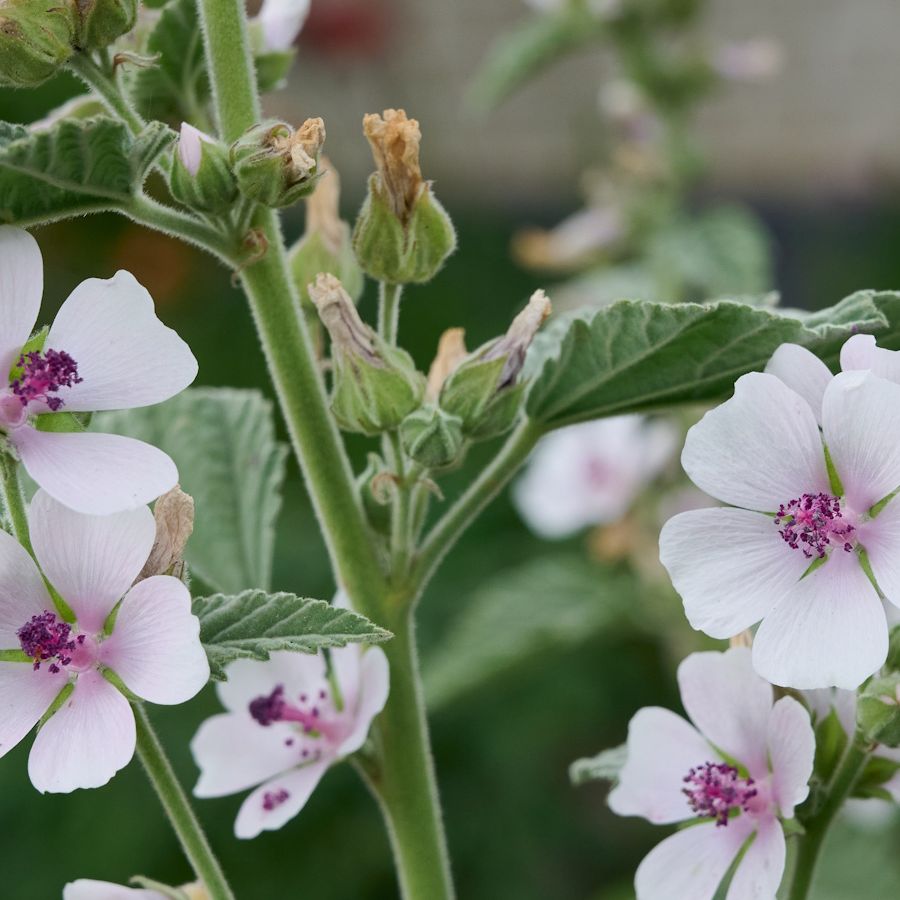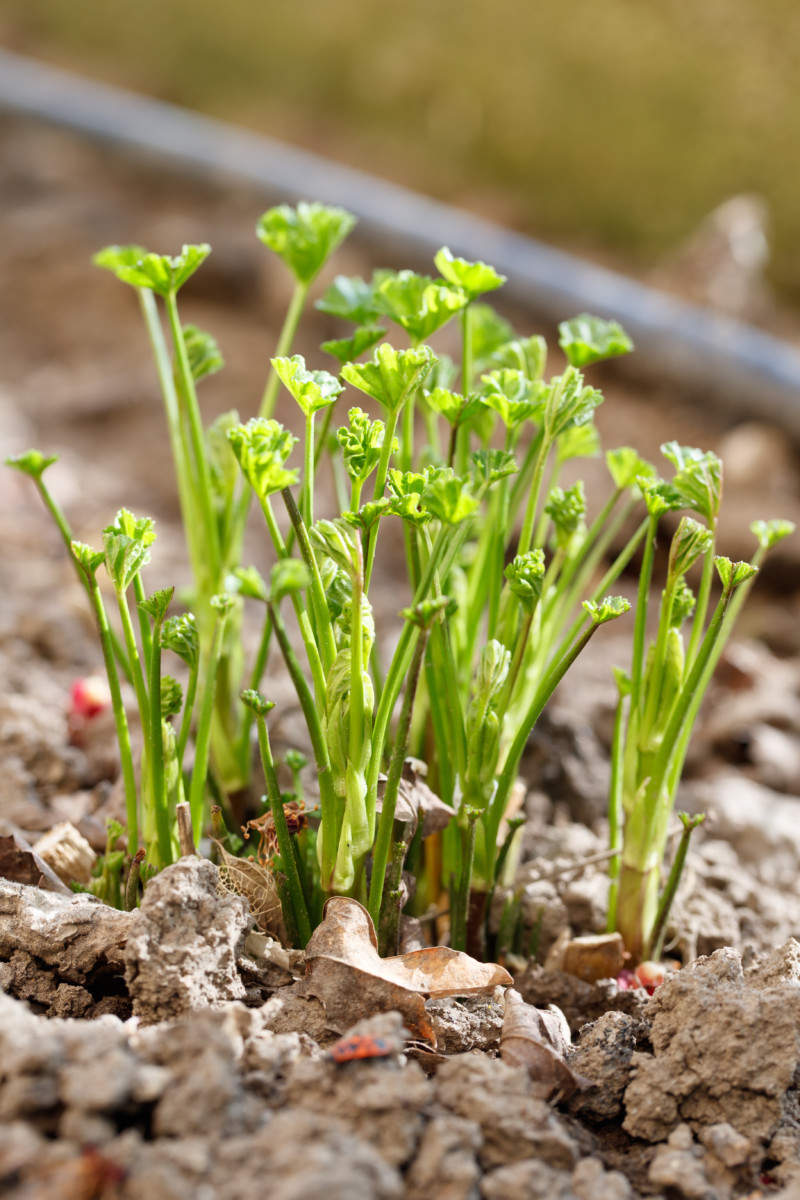How to Grow Marsh Mallow Plants
A complete guide from seed to harvest for this beautiful and useful perennial
Introduction to Marsh Mallow
The marsh mallow plant (Althaea officinalis) is an elegant perennial with a rich history dating back to ancient Egyptian times. Once used to create the original marshmallow confections, this versatile plant offers beautiful blooms for your garden and valuable medicinal properties.
With its tall stature and lovely pale flowers, marsh mallow makes an excellent addition to moist garden areas and is beloved by pollinators. This guide will walk you through everything you need to know about growing and caring for this fascinating plant.

Marsh mallow plants with their characteristic pink-white blooms
Plant Profile: Quick Facts
| Common Name | Marsh mallow |
| Scientific Name | Althaea officinalis |
| Family | Malvaceae |
| Plant Type | Perennial, herb |
| Mature Size | 3-6 ft. tall, 2.5 ft. wide |
| Sun Exposure | Full sun |
| Soil Type | Moist |
| Soil pH | Acidic, neutral, alkaline (adaptable) |
| Bloom Time | Summer (July to September) |
| Flower Color | White to pale pink |
| Hardiness Zones | 3-9 (USDA) |
| Native Areas | Europe, Asia |
Growing Marsh Mallow: Step-by-Step Guide
Choosing the Right Location
Select a spot that receives full sun (at least 6-8 hours daily) and has consistently moist soil. True to its name, marsh mallow thrives in marshy areas with good drainage. Avoid locations where taller plants might cast shade on your marsh mallows.
Light Requirement:
Full sun; will become leggy and produce fewer flowers in shade

A thriving marsh mallow plant in a sunny location
Starting from Seeds
Marsh mallow plants can be started from seeds in two ways:
Option 1: Fall Planting
Sow seeds directly in the garden in late fall. Nature will provide the cold stratification period needed, and seeds will germinate in spring.
Option 2: Spring Planting with Stratification
- Place seeds in a plastic bag with moistened peat moss
- Refrigerate for 8-12 weeks at 33-41°F
- After stratification, sow seeds indoors 3-4 weeks before last frost
- Plant 1/4 inch deep in groups of 5-6 seeds
- Keep soil consistently moist
- Germination takes 3-4 weeks
Pro Tip:
Marsh mallow seeds have naturally low germination rates. Cold stratification significantly improves success.

Young marsh mallow seedlings beginning to grow
Transplanting Seedlings
Once seedlings have developed their first set of true leaves and all danger of frost has passed:
- Harden off indoor seedlings by gradually exposing them to outdoor conditions over 7-10 days
- Space plants 18-24 inches apart, as mature plants will reach 4 feet tall and 2.5 feet wide
- Dig holes twice as wide as the root ball
- Place seedlings at the same depth they were growing in their containers
- Water thoroughly after planting
Establishing Your Plants
During the first growing season:
- Keep soil consistently moist
- Apply a 2-inch layer of mulch to retain moisture and suppress weeds
- Remove weeds until plants are well-established
- Plants may not flower in their first year as they focus on root development
Note:
Marsh mallow plants need at least 2 years of growth before roots are mature enough for harvesting.
Ongoing Care Requirements
Keep soil consistently moist, especially during dry periods. These plants prefer wet conditions but avoid standing water. Regular watering is essential for healthy growth.
Full sun (6-8 hours daily) is required for optimal growth and flowering. Plants grown in partial shade will become leggy and produce fewer blooms.
Prefers moist, well-draining soil. Can tolerate various pH levels and even clay soils. For sandy soils, add organic matter to improve moisture retention.
Cold-hardy in USDA zones 3-9. Plants die back in winter and re-emerge in spring. No special winter protection needed in these zones.
Generally not required. Marsh mallow plants grow in a wide range of soils, including those with high saline content. If soil is very poor, a light application of balanced fertilizer in spring can help.
Deadhead spent flowers to improve appearance. Remove dead leaves during growing season. Cut back entire plant after flowering to prevent self-seeding or in late fall/early winter.
Propagation Methods
Root Division
A reliable method for creating new plants from established ones:
- Wait until plant is dormant (late fall or early spring before growth starts)
- Dig up the entire plant with its root system
- Divide the root mass into smaller sections using a sharp spade
- Ensure each division has adequate roots and at least one growth point
- Replant at the same depth as original plant
- Water thoroughly
Note:
Division can be challenging due to the plant’s extensive, thick root system.
Stem Cuttings
Another method for propagation:
- Take 4-6 inch cuttings from healthy stems in spring
- Remove lower leaves, leaving 2-3 sets at the top
- Dip cut end in rooting hormone (optional)
- Plant in moist potting mix or propagation medium
- Keep soil consistently moist
- Place in bright, indirect light
- Roots should develop in 2-3 weeks
Pro Tip:
Creating a mini greenhouse with a plastic bag over the cuttings can improve success rates.
Harvesting & Uses
When & How to Harvest
Root Harvesting
- Wait until plants are at least 2 years old
- Harvest in fall after foliage dies back
- Carefully dig around plant to expose roots
- Take only what you need, leaving the crown and some roots
- Wash harvested roots thoroughly
- Peel and dry for storage
Leaf Harvesting
- Collect young leaves throughout growing season
- Harvest before flowering for best flavor and medicinal properties
- Dry leaves in a single layer in a warm, dark place with good air circulation
Flower Harvesting
- Collect flowers when fully open
- Best harvested mid-morning after dew has dried
- Use fresh or dry for later use
Traditional & Modern Uses
Medicinal Applications
Marsh mallow has been used medicinally for centuries, primarily for:
- Soothing irritated mucous membranes
- Relieving dry coughs
- Reducing inflammation
- Soothing digestive tract issues
- Treating minor skin irritations
Culinary Uses
- Young leaves can be added to salads
- Flowers make decorative, edible garnishes
- Roots can be boiled to extract mucilage
- Historically used to make the original marshmallow confection
Garden Uses
- Attractive addition to rain gardens
- Excellent for wet areas where other plants struggle
- Pollinator-friendly plant that attracts bees and butterflies
- Can be used in large containers with adequate watering
Common Problems & Solutions
Rust
Symptoms: Raised white dots on leaf undersides that turn orange, then yellow-green, and finally black.
Solution:
- Remove affected leaves promptly
- Avoid overhead watering
- Ensure good air circulation
- Apply copper-based fungicide in severe cases
Flea Beetles
Symptoms: Small pinprick holes in leaves; larvae may feed on roots.
Solution:
- Apply neem oil to affected plants
- Use row covers during early growth
- Keep garden clean of debris
- Maintain healthy growing conditions
Leggy Growth
Cause: Insufficient light or overcrowding
Solution:
- Move to a sunnier location
- Prune surrounding plants that cast shade
- Cut back leggy growth to encourage bushier habit
- Ensure proper spacing between plants
Poor Flowering
Causes: Insufficient sunlight, improper soil moisture, young plants
Solution:
- Ensure plants receive full sun (6+ hours daily)
- Maintain consistent soil moisture
- Be patient – plants may not bloom well in first year
- Deadhead spent blooms to encourage more flowering
Frequently Asked Questions
Can marsh mallow plants be grown in containers?
While possible, growing marsh mallow in containers is challenging due to their need for consistent moisture and their extensive root systems. If attempting container growth, use a large pot (at least 5 gallons), ensure excellent drainage, and be diligent about watering.
How long does it take for marsh mallow plants to mature?
Marsh mallow plants take about 2-3 years to reach full maturity. While they may flower in their first or second year, the medicinal roots shouldn’t be harvested until at least the second year, preferably the third.
Are marsh mallow plants invasive?
While marsh mallow plants can self-seed and spread via their rhizomes, they are generally not considered invasive in most regions. They do form spreading clumps over time, so providing adequate space or periodically dividing them will help keep them in check.
Can I grow marsh mallow plants if I don’t have marshy soil?
Yes, marsh mallow plants can adapt to regular garden soil if provided with consistent moisture. Adding organic matter to improve water retention and mulching around the plants will help maintain the moist conditions they prefer.
Do marsh mallow plants attract beneficial insects?
Yes! Marsh mallow flowers are attractive to many pollinators including bees, butterflies, and beneficial wasps. They make an excellent addition to a pollinator-friendly garden.
Conclusion
Growing marsh mallow plants offers multiple rewards: beautiful blooms that enhance your garden’s aesthetics, valuable medicinal properties, and support for local pollinators. While they require consistent moisture and full sun, they’re otherwise low-maintenance and adaptable to various soil conditions.
Whether you’re interested in exploring traditional herbal remedies, adding unique plants to your garden, or creating a pollinator-friendly landscape, marsh mallow is an excellent choice that connects you to centuries of botanical tradition.
With patience and proper care, your marsh mallow plants will provide you with years of enjoyment and usefulness, becoming a standout feature in your garden. Happy Gardening….
:max_bytes(150000):strip_icc()/gettyimages-511393471-2000-95d7dbca725d44b9b41ceedb4cf127c1.jpg)
A mature marsh mallow plant in full bloom







